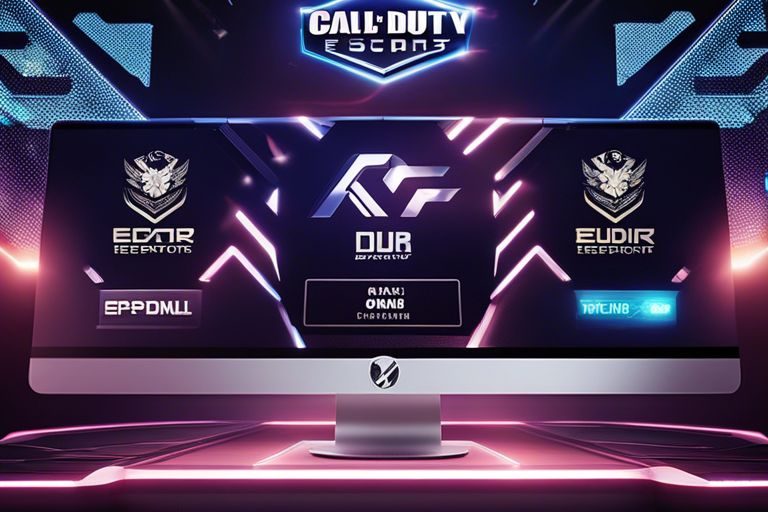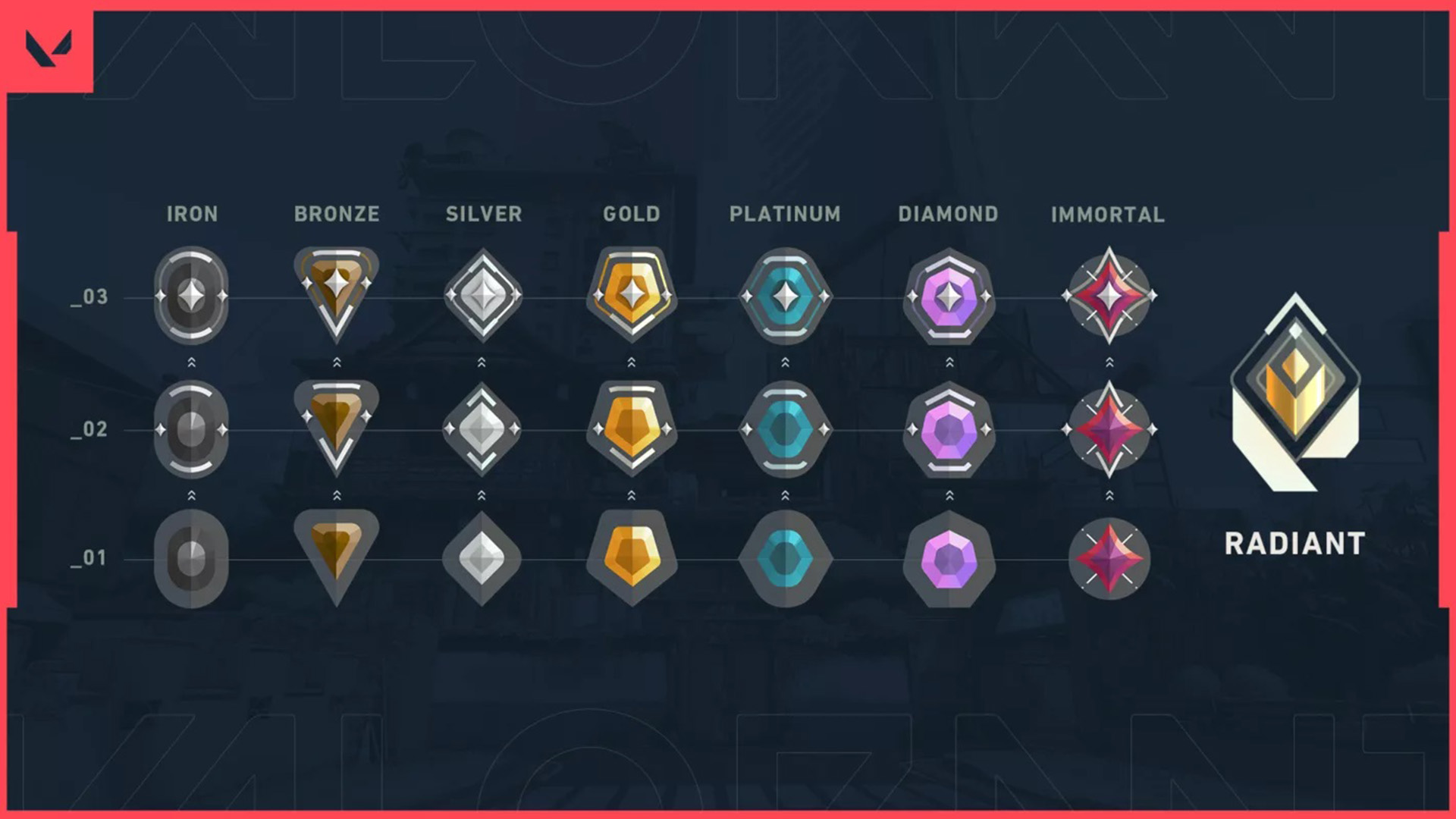Riot loves to complicate the competitive systems in their games, and Valorant is no different. However, we’ve compiled all the important information about the ranking system in Valorant, so you’ll know how to level up in this game as well.
Hachja, competitive modes in games from Riot – almost all of us use them, we can spend hours in them, but nobody knows exactly how they work. That’s why we’ve gathered all the important information about the ranking system in Valorant, so you can understand its main principles and thus level up more effectively.
This guide is divided into two parts:
- In the first part, we will focus on the absolute basics of how the ranking system works in Valorant.
- In the second part, we’ll discuss more about the MMR and RR systems (something Riot likes to complicate in its games).
So let’s get started!
The main principles of the Competitive Mode in Valorant.
How do you unlock competitive mode?
To unlock the competitive mode in Valorant, you need to reach at least level 20.

One profile level is equal to 5000AP (account points). So to get into Ranked you need to reach 95000AP. The fastest way to do that is to play Unrated and Spike Rush games (if you are completely new to the game, we recommend Unrated as it is better for learning the basics). If you play the game for about 3 hours every day, you should manage to reach profile level 20 in about a week.
All Valorant Ranks
Once you’ve unlocked competitive mode, you’ll need to play five placement matches before you receive your first rank. As in most competitive games, your rank determines your current skill level. There are 22 ranks in Valorant:
| Rank | Top % of all players |
| Iron 1 | 100% |
| Iron 2 | 97.8% |
| Iron 3 | 94.3% |
| Bronze 1 | 87.8% |
| Bronze 2 | 80.3% |
| Bronze 3 | 70.5% |
| Silver 1 | 61.2% |
| Silver 2 | 50.5% |
| Silver 3 | 41% |
| Gold 1 | 32.5% |
| Gold 2 | 24.8% |
| Gold 3 | 19% |
| Platinum 1 | 14.4% |
| Platinum 2 | 10.5% |
| Platinum 3 | 7.8% |
| Diamond 1 | 5.7% |
| Diamond 2 | 3.9% |
| Diamond 3 | 2.6% |
| Immortal 1 | 1.6% |
| Immortal 2 | 0.7% |
| Immortal 3 | 0.3% |
| Radiant | Top 500 on the server |
How can you level up?
To get a higher rank than your current one, you need to earn 100 RR points. And how do you earn RR points? Well, by winning games. Usually, you will get between 10 and 50 RR points when you win a match in competitive mode. However, you will also lose a similar amount if the game doesn’t end in your favor.
We’ll explain exactly how the RR system works in Valorant later in this article, but in general you can always see your rank progress by clicking “Career” in the main menu.

So, in summary, you get a higher rank as soon as the bar under your rank icon fills up. And it also works the other way around: when the bar gets lower, you drop one rank. It’s also worth mentioning that you’ll always be informed right after the match how many RR you got or lost.
What is a Valorant Act Rank?
Act Rank is a badge that shows the highest rank and the number of victories you achieved during a certain act.

It is important to mention that this does not affect the matchmaking search. It is basically a “rank gun buddy”. For example, if you managed to become Immortal but lost so many games that you dropped down to Platinum, you will still get into a round with Platinum players. By the way, if this happened, we’re really sorry for you….
Rank drop
Valorant does not have a rank relegation system. However, if you don’t play a single game in competitive mode for more than 14 days, your rank will not be displayed in your profile. However, you will get it back after only one game.
Rank Reset
Your rank is reset with every Valorant episode, so basically once every six months. Normally, after your first Ranked Game in a new episode, you will be ranked 3-4 ranks lower. Riot believes this is an opportunity for players to “re-prove themselves”.
MMR & RR Systems
Now that we know the absolute basics of competitive mode, let’s discuss how the MMR and RR systems actually work in Valorant. If you’ve played League of Legends before, we could say that this is the 1:1 equivalent of the MMR and LP systems. But for those who don’t know it, here’s a quick summary of how it works.
MMR explained in Valorant
What if we told you that your rank is not such an accurate indicator of your skill? Yes, the most important indicator of your skills is your MMR (Matchmaking Rating), which is based on your lifetime performance in competitive mode. And funnily enough, you can’t see your exact MMR because this value is hidden. However, if you have a rank lower than Immortal, your MMR is equal to that of all other players who have the same rank as you:
And how does your MMR value affect your ranked game experience? This is related to the RR system.
RR explained in Valorant
As we mentioned earlier, you gain or lose RR points after each game, right? So the value of RR points you get after a game is exactly assigned to your MMR.
The higher your MMR value is, the more RR points you get when you win and the less when you lose. This is actually one of the main reasons why people (even pro players) create new accounts – their poor MMR value makes their advancement seem like an eternity, so they prefer to start from scratch to get more RR per game.
Difference between MMR & RR
To put all this in simple terms:
- MMR – your “lifetime performance rank.” You can’t see it, but it’s there. It never resets, but remains throughout your life. The only way to increase it is to win games, so you should go on a hot winning streak or create a new account if you are a go-getter.
- RR Points – You need to collect 100 of them every time if you want to reach a higher rank. The amount you receive after a match is strictly tied to your MMR.
- High MMR = A high RR rises after a win, a low RR falls after a loss.
- Low MMR = Smaller RR gains after a win, large RR drops after a loss.
Valorant Beginner’s Guide
Overwhelmed with Valorant? No wonder… Without experience in similar games (such as CS:GO or Overwatch) the start in Valorant is difficult. But don’t worry, we are here to help you with our Valorant Beginner Guide.
Valorant is a special game. Many think that getting into the game is easy, but without shooter experience, you’ll quickly be on the ropes. Even CS:GO veterans can get into trouble… In Counter Strike, there are no flying knife-throwing things-people. But that’s why we are here.
This beginner’s guide is meant to help you get started in Valorant and introduce you to the world of Valorant. After that, the most important features should be clear to you, so that the fun in Valorant is not lost.
Valorant Beginner Guide: Basics
Let’s start with the meaning behind the game. In other words: What is Valorant anyway? Valorant is a first-person shooter in which two teams consisting of five players face off. The first team to win 13 rounds wins. Both teams have a different role – attacker and defender.
The goal of the attackers is to place a spike and protect it until detonation. This must happen on one of the three spots (A/B/C). In turn, the defenders must prevent the attackers from doing so.
Each match consists of two halves. After the first half (12 rounds), the two teams switch roles. The attackers become defenders, the defenders become attackers. Easy.
Agents
Before the start of a match, each player must choose an agent. Agents have unique skills, which in most cases also require a certain playstyle (offensive, defensive, support, etc.). Currently there are 16 agents in total, but new agents have already been leaked and should be added soon.
As a new player, you can initially choose between 5 free agents: Brimstone, Phoenix, Sova, Jett and Sage. To unlock more agents, you will have to sign contracts, which is mostly done via Daily Quests or earning experience points.
Valorant Beginner Guide: The best agent to start with
Phoenix is by far the easiest agent to start with in Valorant. His skills are not too complicated, can be combined well in any situation. But watch out with the flashbangs (aka your Q skill)! You’ll probably flashbang yourself and your mates quite often in the beginning, but practice makes perfect!
Valorant Beginner Guide: The best mode to start with
Stay away from Unrated mode for the beginning. This may sound strange, but especially the beginning of Valorant might be hard for you. Frustration will lead to quick quits, which in turn will get you involved in penalties and XP loss. That’s why you should start with Spike Rush first. An average game here lasts 8 minutes, while other modes can easily go over 50 minutes. In Spike Rush, you’ll be quickly released from suffering without having to take any penalties.
In addition, you don’t have to do any eco rounds in Spike Rush. This means that you’ll be able to try out your agents’ abilities, as well as the most varied weapons. Spike Rush is a great mode to learn the basics of Valorant. When you feel like you’re firmly in the saddle, you can try your luck in Unrated mode. After 20 matches in Unrated mode, you’ll gain access to Competitive mode, where you can earn ranks.
Heroes&WIKI, Valorant, ValorantGuide, ValorantGuides




